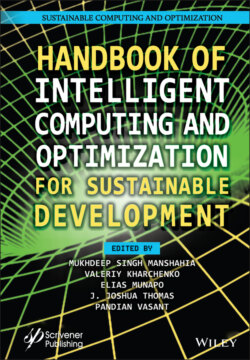Читать книгу Handbook of Intelligent Computing and Optimization for Sustainable Development - Группа авторов - Страница 36
2
Artificial Neural Networks in DNA Computing and Implementation of DNA Logic Gates
ОглавлениеMandrita Mondal1* and Kumar S. Ray2
1Electronics and Communication Sciences Unit, Indian Statistical Institute, Kolkata, India
2Computer Engineering and Applications, GLA University, Mathura, India
Abstract
The activity of the brain resembles the computer as it functions as an input-output device. Artificial neural network (ANN) can be defined as the computing system developed for simulation of human nervous system. It consists of huge number of vastly interconnected processing units, termed as neurons. ANN is one of the most successfully implemented tools in the domain of machine learning. In this chapter, we discuss the development of ANN using short DNA strands, i.e., oligonucleotides. The short sequences of DNA molecules can be used to code input and output signal and to build the basic architecture of the neuron. We also illustrate the design methodology of DNA logic gates and DNA logic circuits which are the basic of Boolean algebra. Because of few drawbacks, viz., immense energy consumption, vast memory requirement, and heat dissipation, the traditional computation is approaching toward the limitations of its processing power and design strategy. The unique property of DNA molecules to store, process, and retrieve information motivates the notion of this unconventional computation, DNA computing. Our aim is the paradigm shift in computational world; from silicon to carbon. The design strategies discussed in this chapter are essential for effective development of DNA computer practically.
Keywords: Artificial neural networks, DNA logic gates, DNA logic circuits, perceptrons, DNA computing, deoxyribozyme, strand displacement
